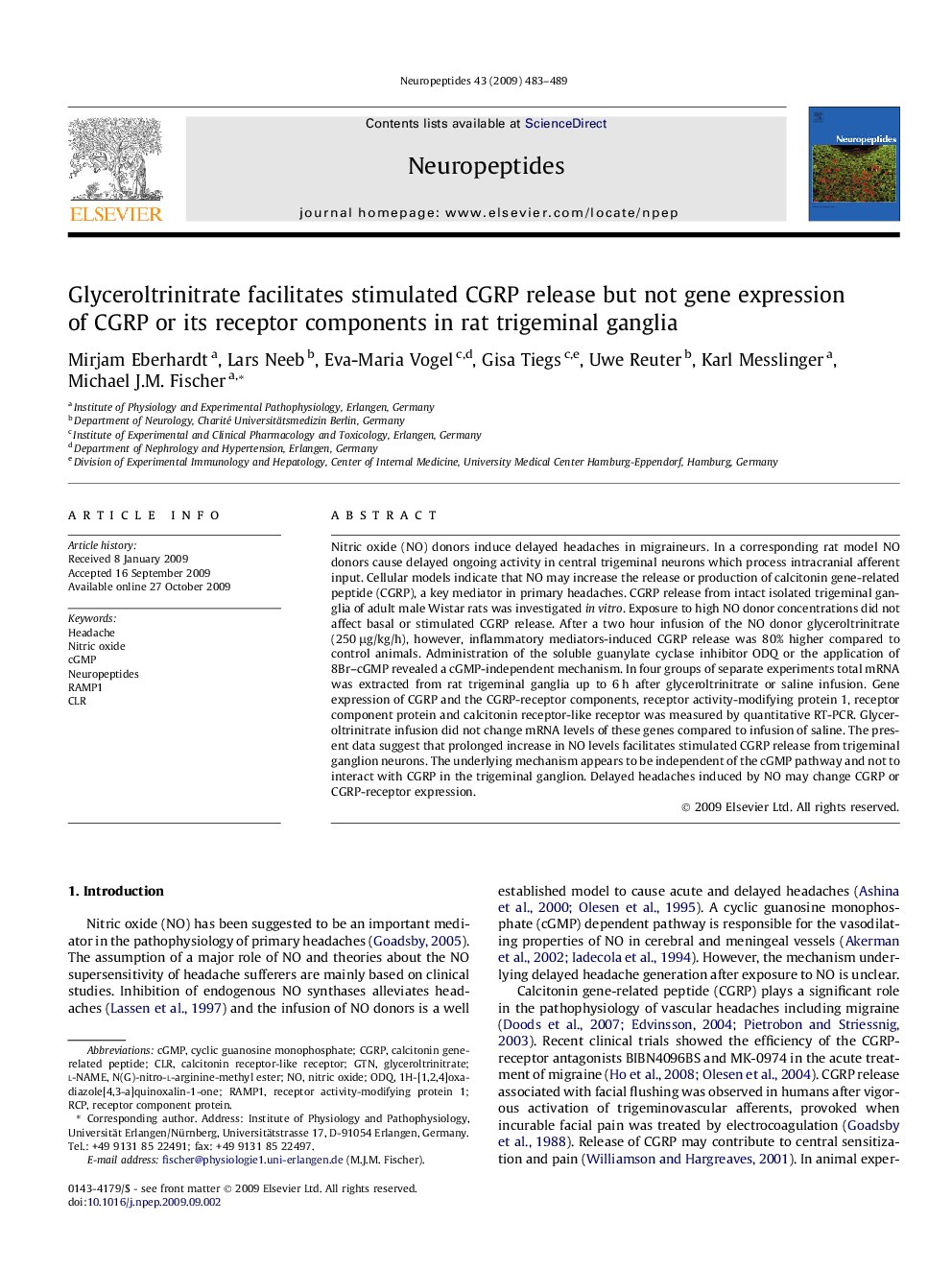| Article ID | Journal | Published Year | Pages | File Type |
|---|---|---|---|---|
| 2808554 | Neuropeptides | 2009 | 7 Pages |
Nitric oxide (NO) donors induce delayed headaches in migraineurs. In a corresponding rat model NO donors cause delayed ongoing activity in central trigeminal neurons which process intracranial afferent input. Cellular models indicate that NO may increase the release or production of calcitonin gene-related peptide (CGRP), a key mediator in primary headaches. CGRP release from intact isolated trigeminal ganglia of adult male Wistar rats was investigated in vitro. Exposure to high NO donor concentrations did not affect basal or stimulated CGRP release. After a two hour infusion of the NO donor glyceroltrinitrate (250 μg/kg/h), however, inflammatory mediators-induced CGRP release was 80% higher compared to control animals. Administration of the soluble guanylate cyclase inhibitor ODQ or the application of 8Br–cGMP revealed a cGMP-independent mechanism. In four groups of separate experiments total mRNA was extracted from rat trigeminal ganglia up to 6 h after glyceroltrinitrate or saline infusion. Gene expression of CGRP and the CGRP-receptor components, receptor activity-modifying protein 1, receptor component protein and calcitonin receptor-like receptor was measured by quantitative RT-PCR. Glyceroltrinitrate infusion did not change mRNA levels of these genes compared to infusion of saline. The present data suggest that prolonged increase in NO levels facilitates stimulated CGRP release from trigeminal ganglion neurons. The underlying mechanism appears to be independent of the cGMP pathway and not to interact with CGRP in the trigeminal ganglion. Delayed headaches induced by NO may change CGRP or CGRP-receptor expression.
